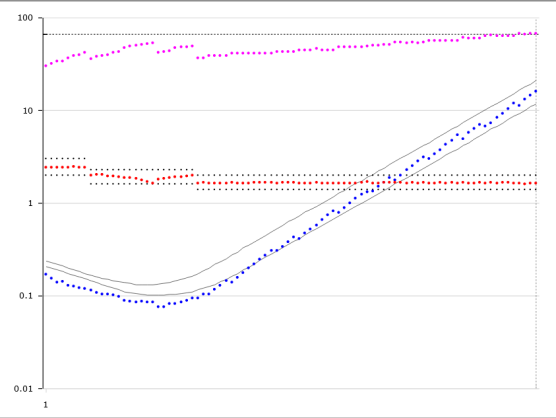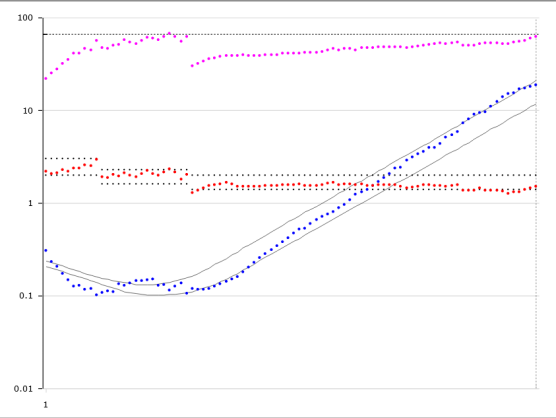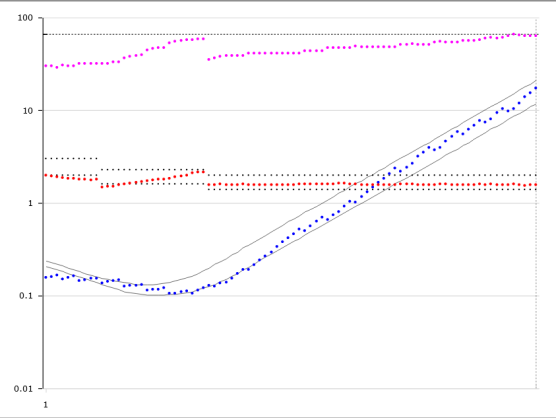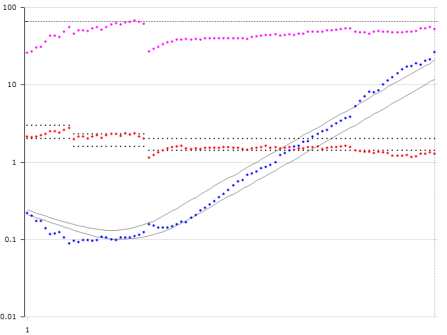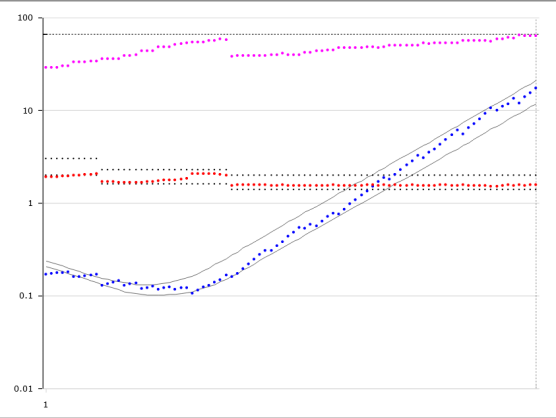Steinway Grand Bridge Modifications
Compiled by Tremaine Parsons - RPT - Sacramento Valley Chapter -
PTG |
|
|
|
|
Personally, I do not buy into this argument that if a Steinway Grand is rebuilt with anything other than Steinway parts it is not a Steinway. As far as I am concerned, if it is a Steinway Cast Iron Plate, Case, Legs and Case Parts, Action Frame and Stack, it is a Steinway. However, the caveat should be Full Disclosure with regard to parts used and any design modifications that are made during remanufacture. I have tuned "rebuilt" Steinways with Steinway action parts that are terrible. I have tuned "rebuilt" Steinways with Steinway action parts that are wonderful. I have worked on Steinways with WNG action parts that are a joy to play. Steinways with Ronson and Renner Hammers that sound great. I have played fairly new Steinways that are quite nice as well as some that are mediocre at best. It not really the parts, it is the quality or the rebuilding and making everything work together. Below, we are going to look at some Steinway Bridge Modifications that actually improve the string scales in the weakest areas of their scale designs. We will be looking at original and remanufactured Steinway Models B, L, and O string scales. I did not rebuild these pianos but the rebuilders are known for top quality work. If I personally owned any of the three below pianos I would prefer the remanufactured scales though I might prefer some slightly different modifications of my own. All of these pianos are Steinways as far as I'm concerned. That being said, I can also respect some who might want soundboard and bridge construction to more or less follow Manufacturer practices. |
|
|
|
|
Steinway Model B - Year Of Manufacture: Unknown The graph on the right more or less represents an original Steinway B string scale. It could contain minor, but insignificant, errors. First we need to explain the graphs a bit for those of you who may not know the various graph elements. The two solid black hockey stick lines are high and low guidelines for Inharmonicity The horizontal black dots are high and low guidelines for tension in Lbs. of (left to right) Unichords Bichords and Trichords 200-300 | 160-230 | 140-200 Blue Dots =Inharmonicity | Red Dots = Tension | Purple Dots = Break%. Each vertical set of dots represent a note. In general, we strive for smoothness of all 3 entities. In general, this is a fairly good string scale with 3 exceptions in approximate order of importance: 1] In the left most portion of the of the right hand horizontal black tension guideline dots, the tension (red dots) is too low for at least 3, if not 5, notes. 2] The top ten notes are somewhat under tensioned as well. 3] The Inharmonicity (blue dots) rises upwards and then downwards around the area of bichords transitioning to trichords. Any time Inharmonicity rises there will be tuning inconsistencies in that the 4:2 and 6:3 octave tuning tests will not agree with each other. |
|
|
|
|
Steinway Model B - Year Of Re-Manufacture: 2019 This is a remanufactured Steinway B with the main change being the additions of a 3rd bridge containing 7 bichord single wound notes in the low tenor. The purpose being the correction of the under tensioned plain wire trichords. Personally, I think I might have opted to convert 5 instead of 7 notes. You can see that the the Inharmonicity "mountain" has been removed. You can also see that this rebuilder favored extremely even tension of the trichords at the expense of small jumps in Inharmonicity smoothness. I might be inclined towards smoother Inharmonicity at the expense of small jumps in tension. The speaking lengths of the long bridge have been changed to provide this even tension. The low tension in the high treble has also been improved. I believe that Del Fandrich may have pioneered this type of conversion as I often heard about his "Killer B" conversion. There could be more discussion about the tensioning of the unichords and bichords but this is beyond the scope of this presentation. |
|
|
|
|
Steinway Model L - Year Of Manufacture: Unknown The graph on the right more or less represents and original Steinway L string scale. It could contain minor, but insignificant, errors. This has pretty much the same weak areas as the Original Steinway B. We have 3 under tensioned lowest tenor plain wires, and under tensioned top 14 notes, and a bit of an Inharmonicity mountain in the upper bichords. Generally, a reasonably good scale with the exception of the above mentioned areas. |
|
|
|
|
Steinway Model L - Year Of Re-Manufacture: 2018 In this case, the rebuilder added a small 3 note 3rd bridge connected to the long bridge and converted 3 plain wire trichords to bichord single wound notes. This would be what I would have done. You can see that the the Inharmonicity "mountain" has been removed. You can also see that this rebuilder favored extremely even tension of the trichords at the expense of small jumps in Inharmonicity smoothness. I might be inclined towards smoother Inharmonicity at the expense of small jumps in tension. The speaking lengths of the long bridge have been changed to provide this even tension. The low tension in the high treble has also been improved. If there was a apron on the bass bridge it would have been removed and the bass bridge was moved so that speaking lengths are shorter and the bridge mounted farther from the rim. This also increases backstring length and promotes more freedom of movement of the bass bridge. |
|
|
|
|
Steinway Model O - Year Of Manufacture: Unknown The graph on the right more or less represents and original Steinway O string scale. It could contain minor, but insignificant, errors. This has pretty much the same weak areas as the two original scales above. We have 3 under tensioned lowest tenor plain wires, and under tensioned top 14 notes, and a bit of an Inharmonicity mountain in the upper bichords. |
|
|
|
|
Steinway Model O - Year Of Re-Manufacture: 2019 This is a remanufactured Steinway 0 with the main change being the additions of a 3rd bridge containing 7 bichord single wound notes in the low tenor. The purpose being the correction of the under tensioned plain wire trichords. Personally, I think I might have opted to convert 4 instead of 7 notes. That being said, the decision of number of notes to convert may also be related to joining the 3rd bridge to the long bridge or rib placement below. If there was a apron on the bass bridge it would have been removed and the bass bridge was moved so that speaking lengths are shorter and the bridge mounted farther from the rim. This also increases backstring length and promotes more freedom of movement of the bass bridge. |
|
|
|
|
|
|

